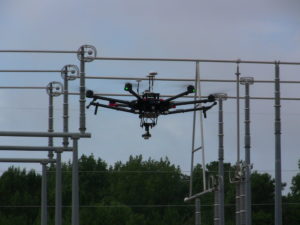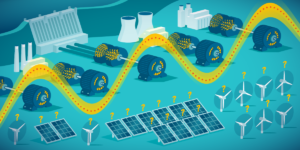Facts, Figures, and Findings from EPRI Research, Reports, and Other Sources

Two EPRI studies suggest that large-scale automation of transmission system inspection is feasible in the near future. Increasingly, utilities inspect transmission systems by deploying drones to capture high-definition images of conductors, insulators, and other components. In most applications today, humans operate the drones and evaluate the images. By making drone-based inspections cheaper and less time-intensive, automation can drive widespread adoption. In the first study, EPRI tested several low-cost, commercially available drones at a Georgia field site with energized and non-energized transmission structures. The drones autonomously followed complex, three-dimensional flight plans and captured images without striking the structures. Existing LIDAR data ...
Read More
Read More

An EPRI study finds that utilities and ratepayers can derive substantial value from large-scale deployment of electric vehicles (EVs) equipped to transmit power to the grid. The International Energy Agency projects that by 2030 more than 130 million EVs will be on roads globally. Based on typical driving patterns, about 90% of EVs will be parked at any given time. These vehicles can potentially be grid-connected and available for dispatch to support grid operations. Many studies have documented grid benefits of managed or smart charging—systems through which a utility can remotely turn charging levels up, down, or off. But what ...
Read More
Read More

A vibration imaging system may offer utilities a more comprehensive approach for detecting, characterizing, and tracking vibrations in power plant equipment, an EPRI study finds. Potentially, the technology can be applied in fossil, nuclear, hydropower, and wind power plants. Over time, vibration in pumps, motors, rotors, and other power plant components can lead to degradation and even failure. Vibration monitoring can detect warning signs of failure, prompting maintenance and potentially preventing costly outages. Traditionally, vibration sensors such as accelerometers are attached to equipment, but these collect data only at individual points and cannot comprehensively assess vibration of components and systems ...
Read More
Read More

An EPRI study looks at the potential impacts of reduced inertia on frequency stability in the world’s electric power grids and reviews emerging solutions. Turbines, generators, and motors in fossil, nuclear, and hydro power plants spin at speeds proportional to grid frequency. The rotational energy of these massive devices provides significant inertia that can counteract changes in grid frequency due to disturbances. For example, if one power plant in a region goes offline, grid frequency will decrease. Other spinning generators can respond by speeding up slightly to resist the frequency shift and stabilize the grid. Because solar energy plants don’t ...
Read More
Read More

Utility-scale solar photovoltaic plants in 2030 are likely to look different and have more capabilities than they do today, according to an EPRI study. Over the next decade, plant operators and developers are expected to use various design strategies and technologies to continue deployment and mitigate declining solar value. Solar energy is becoming a victim of its own success. As with other electricity generating assets, the more capacity deployed in a region, the less each additional unit is worth. The U.S. Energy Information Agency projects that solar will account for more than half of electricity capacity added between now and ...
Read More
Read More

